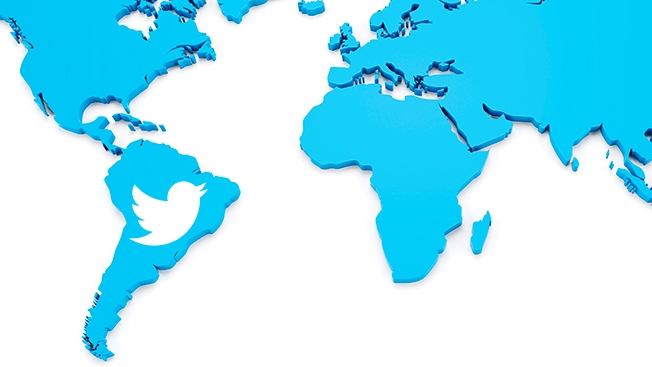
Global brand marketers that want to zero in on what they can get out of Promoted Trends—which cost around $200,000 a day in the United States—might want to run a few tests in Latin America on the cheap. IMS, which has handled everything but Brazil in terms of Twitter's Latin American sales push since last September, said Promoted Trends are often sold in the region at a lower cost than what U.S.-based marketers pay.
"The pricing is tailored by country," Maren Lau, IMS chief marketing officer, told Adweek. "It's not the same pricing as in the U.S. It's done to need, I guess, [with] purchasing parity for the country in question."
Last week, IMS and Twitter expanded their relationship while launching ad sales in Ecuador and Peru. Lau, based in Buenos Aires, Argentina, spoke with Adweek on the phone about how Twitter ads were playing among brands in the various countries she helps market.
"We've seen very good reception for Promoted Trends as well as Promoted Tweets," she said. "And a lot companies want to grow their followers, so first they go with Promoted Accounts. Promoted Trends are getting some interesting pick-up. We've seen McDonald's with Promoted Trends that were very successful."
Other brands that are buying into Twitter's ad products for emerging Latin America include Nike, Samsung, Coke, PlayStation and Lan Airlines, Lau said.
IMS also handles ads sales for Google-owned Waze while, as a digital agency, handles buying online ads for Netflix. Interestingly, Lau said of the latter: "Netflix is the largest digital advertiser in Latin America, essentially."
Here are other excerpts from Adweek's conversation with the cmo.
Are Promoted Accounts more popular among brands than Promoted Tweets in Latin America?
Promoted Accounts and Promoted Tweets are about the same. And then [comes] Promoted Trends.
What else have you seen so far in terms of Twitter ads?
We've seen close to a 95 percent return rate among our clients. ... The enthusiasm and appetite for brands to start using Twitter [is why] we just launched a team in Peru and Ecuador. The reason why it's important to have a team on a ground in Latin America is because there's still a lot of education happening in the market.
Can you characterize your client list now compared to six months ago?
That's a tough question. ... But to give you a sense, we've had more than 100 clients with repeat campaigns. It's a significant number for a region like Latin America. Twitter is not just banner ads. It's a more complex content product. And so we've certainly been with clients that are eager to use something new like Twitter. Our work is to continue to make it important for those clients while educating other brands that may be need to know how to best use their handle or a hashtag.
What are some important differences social advertisers need to understand when it comes to the U.S. and Latin American markets?
I think at a very high level, the most fundamental concept to realize is that Latin America is different from the U.S. And two, even within Latin America, the countries are different from one another. So it cannot be treated as a homogeneous region. In the U.S., you see people using Twitter as a very formal thing while trying to express themselves as professionals. But in Mexico, for instance, people are more informal with a lot of, "Hey, I'm here."
So, in other words, what might work in Toronto may not work in New York City—and the same goes in the context of San Juan and Mexico City?
Sure. Argentina, for example, is a very informal, creative, advanced digital market. But if you go to Chile, it's a very formal market. So even something as simple as an advertising sales side of things ... to be able to understand how to approach the client is [more nuanced].